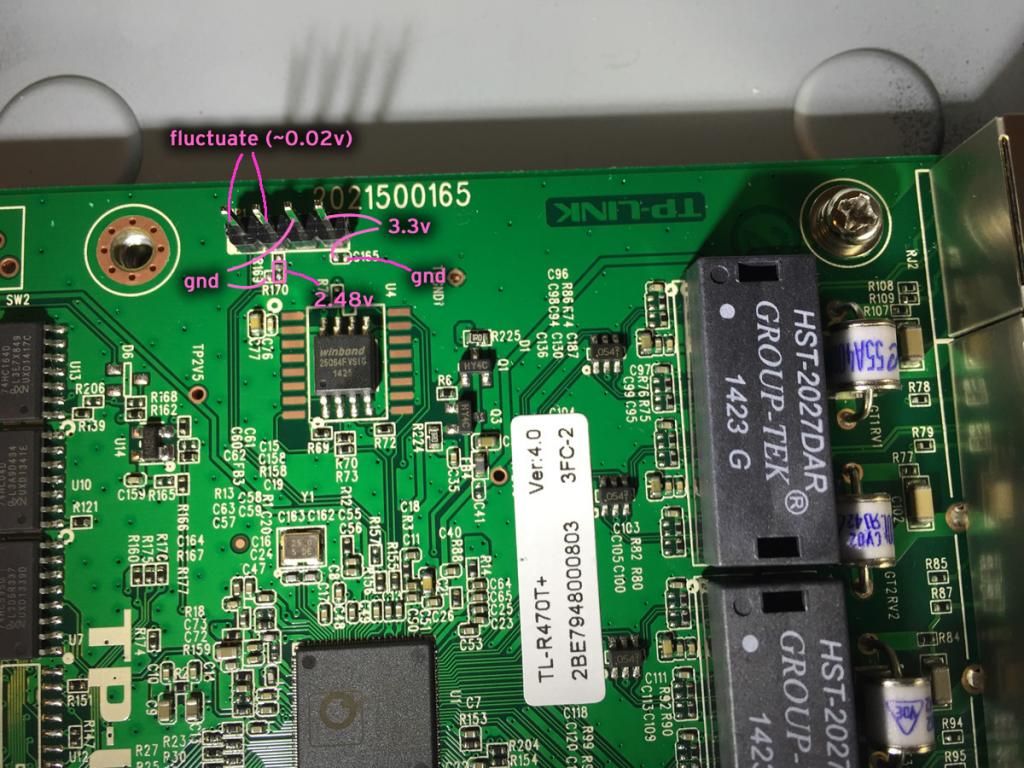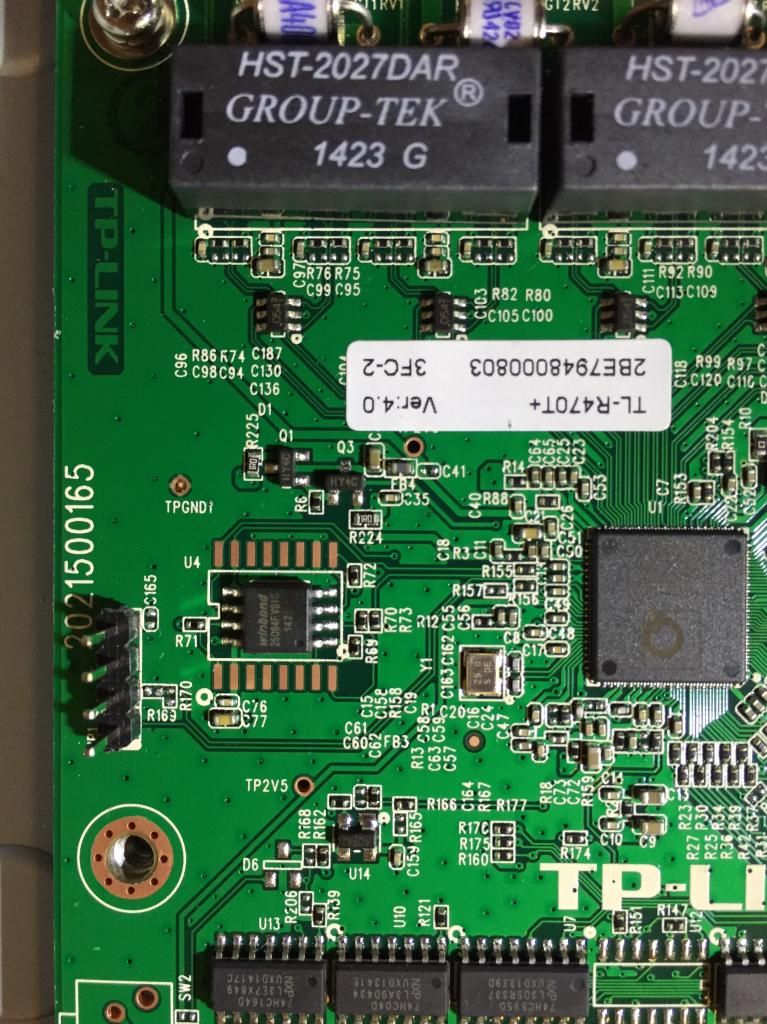I've got a wired (no radio) router that looks like a decent little device. Unfortunately, it's a TP-Link and the firmware is predictably pathetic. The SoC is a QCA (Atheros) 9533, which appears to be supported in Barrier Breaker. I'm trying to get a serial connection in order to reliably flash OpenWRT builds, but I'm failing miserably. With a multi-meter, I've managed to identify VCC and GND, which leaves two pins for Tx/Rx or Rx/Tx. I've tried both directions with no luck. I've read of other TP-Link devices needing pull-ups between Tx and VCC. Tried it on both potential headers, no luck.
Here's a photo with various headers and nearby surface mount points labeled with voltages. Pins 2 & 4 (from the left) are connected to the nearby pads (one side of R169 and C165; neither present). My hunch is that one or more of those missing components needs to be present for serial to work. I've tried a 4.5k and 10k resistor across the R169 gap, but still no joy.
Any ideas?

(Last edited by brnt on 28 Oct 2014, 04:40)



